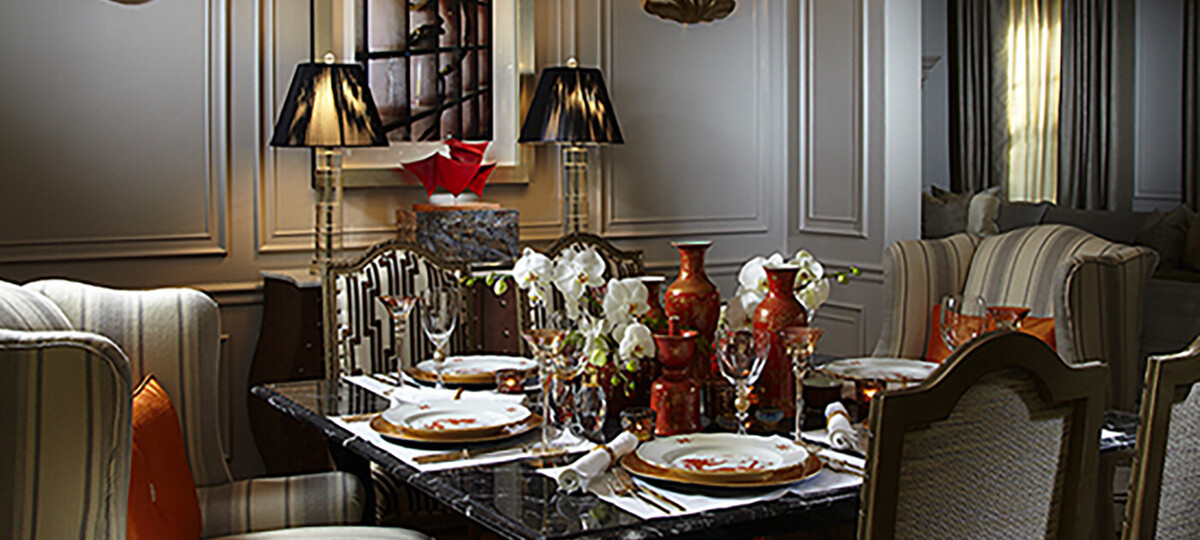A Few of My Favorite Things

Embracing Personal Style in Home Decor
When I hear Julie Andrews sing "My Favorite Things," it always makes me think about the things I love. While I may not be a poet or a songwriter, I can share some of my favorite design tips that help create a space that feels uniquely mine.
One of the most important principles I follow is that your home should not be a museum. It’s okay to mix styles freely. Layering color, texture, and different design elements gives your space a personal touch and ensures it stays fresh for longer. Accessories are a great way to add personality without committing to one specific style or era.
Mixing wood tones can add depth and character to a room. Instead of sticking to all-matching finishes, consider blending different shades and textures. This approach creates a more dynamic and lived-in feel. If you have vintage furniture, don’t shy away from refinishing or even painting it. Letting go of the idea that everything has to be brown opens up a world of possibilities.
At the dining table, mixing seating options can create an interesting visual effect. Having eight identical chairs might seem predictable. If that feels overwhelming, at least consider adding a few different types of chairs. For durability, especially if you want light-colored upholstery, leather or vinyl are excellent choices.
Skirted furniture adds a sense of completeness to a room. Too many exposed legs can make a space feel unstable. A skirted sofa, for example, can give a grounded look. A well-designed room should balance skirted pieces, furniture with legs, and case goods. Don’t forget about throw pillows—using two pairs in contrasting patterns, colors, and textures adds visual interest and comfort.
You don’t necessarily need a sofa in your living room. There's no rule that says a living area must have one. Armchairs, loveseats, or chaises can serve as effective alternatives. If you do choose to include a sofa, consider placing it in another area like the family room, bedroom, or a cozy library.
Small rooms offer a unique opportunity to experiment with bold designs. Large-scale printed fabrics or wallpaper on the walls and even the ceiling can create a dramatic effect. It’s easier and more cost-effective to take risks in a small space. You might tire of a bold print in a main living area, but it can transform a smaller, less-used room into a vibrant place to relax. Avoid using small-scale furniture, as it can make the space feel cramped. Opt for a few larger pieces to create the illusion of more space.
Another tip for small rooms is to embrace dark colors. Painting walls in a deep hue can actually make the room feel larger than expected. Make sure you love the color you choose, so you won’t regret it later. If you're new to decorating, white walls are a safe bet—they never go out of style and offer a timeless backdrop.
Wallpaper is a powerful tool for making a statement. While it’s somewhat permanent, it allows you to express your personality through pattern and color. One clever trick is to wallpaper sliding closet doors so they blend seamlessly with the surrounding walls. This is especially useful if you have multiple doors facing a hallway.
Rugs play an important role in anchoring a space, but they aren't always necessary. Removing carpets can open up a room and create a more spacious feel. Bare floors, whether wood or stone, can be just as beautiful and easier to clean. In the kitchen, for instance, a rug in front of the sink can be more practical than a bathmat. Most rugs are designed to handle frequent use, making them a better choice for high-traffic areas.
Joseph Pubillones, owner of Joseph Pubillones Interiors in Palm Beach, Florida, shares these insights based on years of experience in interior design. His approach emphasizes creativity, functionality, and personal expression. Whether you’re looking to revamp your space or simply gain inspiration, his tips can guide you toward a more stylish and comfortable home.
Post a Comment